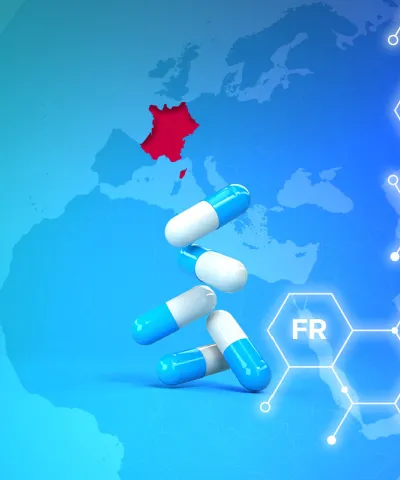2023 was a turbulent year for tech. Based on data from Layoffs.fyi, almost 1,000 tech companies conducted layoffs through the end of Q2 2023, impacting over 250,000 employees. Wayfair, Google, and Twitch (among other companies) have also announced layoffs in early 2024, suggesting that the industry has still not fully rebounded.
Despite a rough start to the year, most SaaS businesses in Simon-Kucher’s Global B2B Software Study expected to return to revenue growth in 2023 (see Figure 1). However, their expected revenue growth was significantly slower than the industry average of >20% in 2020 and 2021. Based on our study results, we have identified top performing B2B SaaS businesses with exceptional 2022 revenue growth and combined this data with our pricing and sales expertise to identify four best practices that differentiate top-performing companies.

Characteristics of Top-Performers:
Characteristic #1: Top performers know the importance of pricing
While the management priorities of most companies were largely similar (see Figure 2) top-performing companies were significantly more focused on pricing. The median top-performer devoted 25% more attention to pricing than other SaaS businesses – one of the largest gaps for any activity in our survey. The fact that top performers prioritized pricing at the highest levels of their company was a clear signal that they understand the importance of pricing to their growth.
Why it matters: Based on our project experience, executive level buy-in is a key signal to the rest of the organization. If pricing is a management priority, then internal teams know they have the support required to advance pricing related initiatives. If anything goes wrong with these initiatives (e.g., a price increase leads to a large customer churning) then management commitment also helps signal that the business will “stay the course” since this is part of a larger, strategic plan. Organizational commitment is critical to getting pricing right and it is hard to get this commitment if your management team is not bought in.

Characteristic #2: Top performers are aware of their customer’s willingness-to-pay
Top performing SaaS businesses were more likely to have raised prices from 2022-2023, but they also implemented larger price increases than other survey respondents (see Figure 3). Despite larger price increases, top performers did not experience higher churn than other companies, indicating they were aware of what their customers were willing to pay.
Why it matters: Successful price increases are one of the fastest and most direct methods your business can use to drive growth. Other methods of revenue growth typically require convincing a customer to change their behavior in some way, but successful price increases lead to direct, immediate growth when implemented correctly.

Characteristic #3: Top performers use longer term contracts
Top performers and non-top performers were separated by more than just pricing, since top performers were more likely to use longer term contracts. While 34% of non-top-performing companies had an average contract length of less than a year, only 14% of top performing companies fell into this category (see Figure 4).
Why it matters: Sub-sector norms and customer preferences both influence contract length, but longer-term contracts give SaaS businesses more time to prove value to customers prior to renewal (which is critical if there is a lengthy install period). Longer contracts also allow SaaS companies to “lock-in” customer spend and reduce churn since customers have fewer opportunities to leave.
Critically, top performers paired longer-term contracts with annual price escalators and healthy renewal price increase targets, ensuring they did not commit to bad deals. Our project experience shows that SaaS customers (depending on sub-industry) may accept annual escalators of up to 5% or more, allowing SaaS companies with multi-year contracts to increase revenue from their install base each year, or leverage a potential price increase to drive expansion.

Characteristic #4: Top performers prepare their Sales team for success
Finally, top performing SaaS businesses provided their Sales team with more support materials than other survey respondents. The median top performer armed their Sales team with five pieces of collateral vs. four pieces of collateral for non-top performers. Standardized discovery questions and overviews of learnings and best practices from old deals were the specific support materials with the largest “gaps” between company types (see Figure 5).
Why it matters: Standardized discovery questions help ensure Sales maximizes the value of their customer touchpoints and helps Sales deliver relevant, engaging information to customers. Overviews of learnings and best practices from completed deals are also critically important, since they accelerate the learning curve for new Sales team members and help your Sales team learn about (and adopt) best practices that are used by your top sellers.
In Simon-Kucher’s experience, Sales support materials are a highly important tool. Discounting guidelines, approval processes, and deal desks are also important and help protect price integrity, but these processes do not fundamentally improve the quality of your Sales team.

In this article we shared four best practices of top-performing companies, but your business likely has even more areas where it can improve. Reach out to our growth experts at Simon-Kucher if you are ready to accelerate your return to growth.
The Global Software Study survey was conducted from May to July 2023 by Simon-Kucher, with fielding through panel data provided by RepData, an independent market research agency. The study surveyed 500+ software executives across 20 countries, including the United States.








